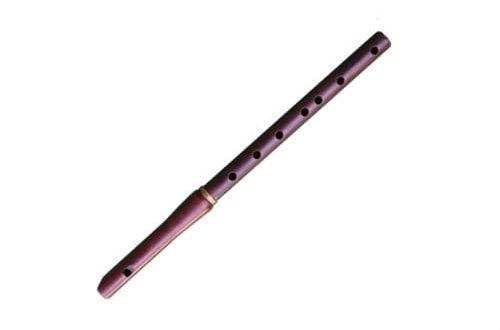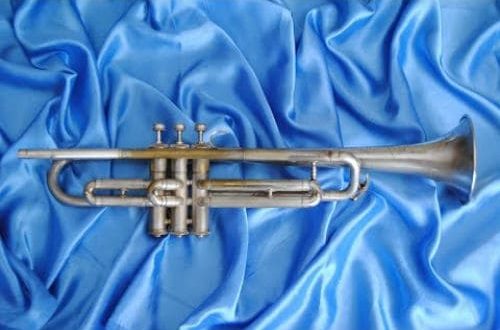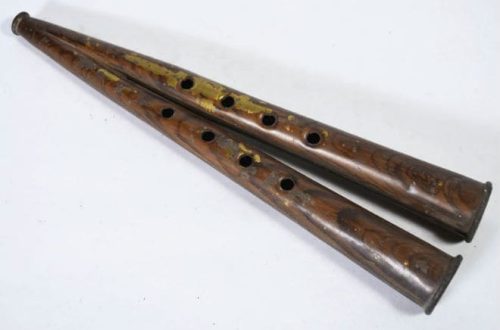
Harmonica: instrument composition, history, types, playing technique, how to choose
Contents
The harmonica is a wind reed musical instrument that many people remember from childhood. It is characterized by a rumbling metallic sound, which has made it popular in the following genres: blues, jazz, country, rock and national music. The harmonica had a major impact on these genres as early as the early 20th century, and many musicians continue to play it today.
There are several types of harmonicas: chromatic, diatonic, octave, tremolo, bass, orchestral, and so on. The instrument is compact, sold at an affordable price and it is really possible to learn how to play it on your own.
The device and the principle of operation
To extract sounds from the instrument, air is blown or drawn in through its holes. The harmonica player changes the position and shape of the lips, tongue, inhales and exhales by changing the strength and frequency – as a result, the sound also changes. Usually there is a number above the holes, for example, on diatonic models from 1 to 10. The number denotes the note, and the lower it is, the lower the note.

The instrument does not have a complicated device: these are 2 plates with reeds. On the top there are tongues that work on exhalation (when the performer blows in air), on the bottom – on inhalation (draws in). The plates are attached to the body, and it hides them from below and above. The length of the slots on the plate varies, but when they are on top of each other, the length is the same. The air flow passes through the tongues and slots, which causes the tongues themselves to vibrate. It is due to this design that the instrument is called reed.
A jet of air going into (or out of) the “body” of the harmonica causes the reeds to vibrate. Many mistakenly believe that the sound is created when the reed hits the record, but these 2 parts do not make contact. There is a small gap between the slot and the tongue. During the Play, vibrations are created – the tongue “falls” into the slot, thereby blocking the flow of the air stream. Thus, the sound depends on how the air jet oscillates.
History of the harmonica
The harmonica is considered a wind organ with a Western motif. The first compact model appeared in 1821. It was made by the German watchmaker Christian Friedrich Ludwig Buschmann. The creator came up with his name “aura”. The creation looked like a metal plate with 15 slots that covered tongues made of steel. In terms of composition, the instrument was more similar to a tuning fork, where the notes had a chromatic arrangement, and the sound was extracted only on exhalation.
In 1826, a master named Richter invented a harmonica with 20 reeds and 10 holes (inhale/exhale). It was made from cedar. He will also offer a setting in which the diatonic scale (Richter system) was used. Subsequently, products common in Europe began to be called “Mundharmonika” (wind organ).
North America had its own history. It was brought there by Matthias Hohner in 1862 (before that he “promoted” it in his homeland), who by 1879 was producing about 700 thousand harmonicas a year. The instrument became widespread in the United States during the years of the Great Depression and World War II. Then the southerners brought the harmonica with them. Honer quickly became known in the music market – by 1900 his company had produced 5 million harmonicas, which quickly scattered throughout the Old and New Worlds.
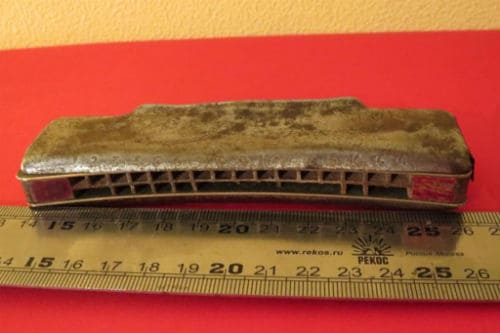
Varieties of harmonicas
Experienced musicians who masterfully master the harmonica advise far from any model as the first one. It’s not about quality, it’s about type. Types of tools and how they differ:
- Orchestral. The rarest. In turn, there are: bass, chord, with several manuals. Difficult to learn, so not suitable for beginners.
- Chromatic. These harmonicas are characterized by a classical sound, while they contain all the sounds of the scale, like a piano. Difference from diatonic in the presence of semitones (the change in sound occurs due to a damper that closes the holes). It consists of many elements, but it can be played in any key of the chromatic scale. Difficult to master, mainly used in jazz, folk, classical and orchestral music.
- Diatonic. The most popular subspecies played by blues and rock. The difference between the diatonic and the chromatic harmonica is that the first 10 holes and in a specific tuning, it does not have semitones. For example, the system “Do” includes the sounds of the octave – do, re, mi, fa, salt, la, si. According to the system, they are major and minor (note key).
- Octave. Almost the same as the previous view, only one more hole is added to each hole, and with the main one it is tuned to a single octave. That is, a person, when extracting a note, hears it simultaneously in 2 ranges (upper register and bass). It sounds wider and richer, with a certain charm.
- Tremolo. There are also 2 holes per note, only they are tuned not in an octave, but in unison (there is a slight detuning). During the Play, the musician feels a pulsation, vibration, which saturates the sound, makes it textured.
For those who want to learn to play the harmonica, it is recommended to choose the diatonic type. Their functionality is enough to learn all the basic tricks of the Play.
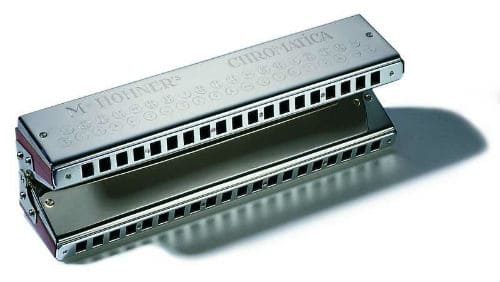
Play technique
In many ways, the sound depends on how well the hands are placed. The instrument is held in the left hand, and the air flow is acted upon with the right. The palms form a cavity that serves as a chamber for resonance. Tight closing and opening of the brushes “creates” different sounds. In order for the air to move evenly and strongly, the head must be directed straight. The muscles of the face, tongue and throat are relaxed. The harmonica is tightly wrapped around the lips (mucosal part), and not just leaned against the mouth.
Another important point is breathing. A harmonica is a wind instrument that is capable of producing sound both on inhalation and on exhalation. It is not necessary to blow air or suck it through the holes – the technique boils down to the fact that the performer breathes through the harmonica. That is, the diaphragm works, not the mouth and cheeks. This is also called “belly breathing” when a larger volume of the lungs is filled than the upper parts, which occurs in the process of speech. At first it will seem that the sound is quiet, but with experience the sound will become more beautiful and smoother.
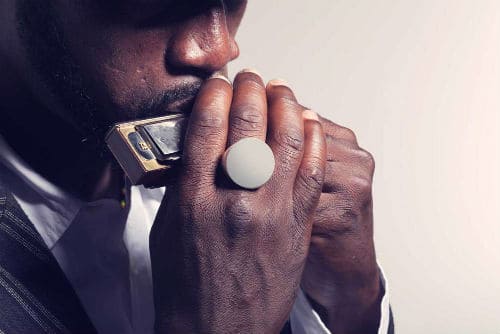
In a classic diatonic harmonica, the sound range has one feature – 3 holes in a row sound the same. Therefore, it is easier to play a chord than a single note. It happens that it is necessary to play just individual notes, in such a situation you will have to block the nearest holes with your lips or tongue.
Knowing the chords and basic sounds is easy to learn simple songs. But the harmonica is capable of much more, and here special techniques and techniques will come to the rescue:
- A trill is when pairs of adjacent notes alternate.
- Glissando – 3 or more notes smoothly, as if sliding, turn into a common sound. A technique using all the notes to the end is called a drop-off.
- Tremolo – the musician squeezes and unclenches his palms, creates a vibration with his lips, due to which a trembling sound effect is obtained.
- Band – the performer adjusts the strength and direction of the air flow, thereby changing the tone of the note.
You may not even know musical notation, in order to learn how to play, the main thing is to practice. For self-study, it is recommended to get a voice recorder and a metronome. A mirror will help control movement.
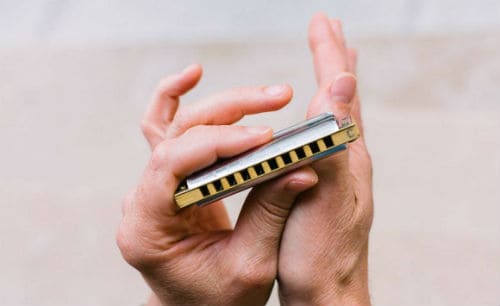
How to choose a harmonica
Key recommendations:
- If there was no playing experience before this, choose a diatonic harmonica.
- Build. Many teachers believe that the key of “C” (Do) is most suitable as the first instrument. This is a classic sound, to which you can find many lessons on the Internet. Later, having mastered the “base”, you can try to play on models with a different system. There are no universal models, so musicians have several types in their arsenal at once.
- Brand. There is an opinion that you can start with any harmonica, a kind of “workhorse”, and only then buy something better. In practice, it does not come to buying a good product, because a person is disappointed after playing a low-quality harmonica. List of good harmonicas (companies): Easttop, Hohner, Seydel, Suzuki, Lee Oskar.
- Material. Wood is traditionally used in harmonicas, but this is a reason to think about buying. Yes, the wooden case is pleasant to the touch, the sound is warmer, but as soon as the material gets wet, the pleasant sensations immediately disappear. Also, durability depends on the material of the reeds. Copper (Hohner, Suzuki) or steel (Seydel) are recommended.
- When buying, be sure to test the harmonica, namely, listen to each hole while inhaling and exhaling. Usually there are special bellows for this purpose at musical points, if not, blow it yourself. There should be no extraneous crackles, wheezing and clanging, only a clear and light sound.
Do not take a cheap instrument designed for children – it will not keep the system and it will not be possible to master different playing techniques on it.
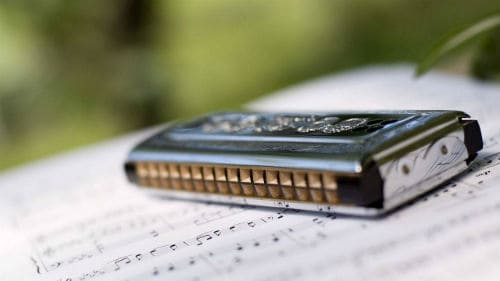
Setup and care
Reeds attached to a metal plate are responsible for the formation of sound in the “manual organ”. It is they who oscillate from breathing, change their position in relation to the plate, as a result, the system changes. Experienced musicians or craftsmen should tune the harmonica, otherwise there is a chance of making it worse.
The setup itself is not difficult, but it will take experience, accuracy, patience and an ear for music. To lower the note, you need to increase the gap between the tip of the reed and the plate. To increase – on the contrary, reduce the gap. If you lower the tongue below the level of the plate, it simply will not make a sound. A tuner is usually used to control the tuning.
Special care for the harmonica is not required. There is such a rule: “Playing? – Do not touch!”. Here are some tips on how to care for the instrument, using the example of a diatonic harmonica:
- Cleaning without disassembly. If the body is made of plastic, it is allowed to rinse the product under warm water, and then knock out all the water from it. To eliminate excess liquid – strongly blow all the notes.
- With disassembly. If a complete cleaning is required, you will have to remove the covers and tongue plates. To make it easier to assemble later – lay out the parts in order.
- Hull cleaning. Plastic is not afraid of water, soap and brushes. The wooden product cannot be washed – only wiped with a brush. You can wash the metal, but then wipe it thoroughly and dry it so that it does not rust.



